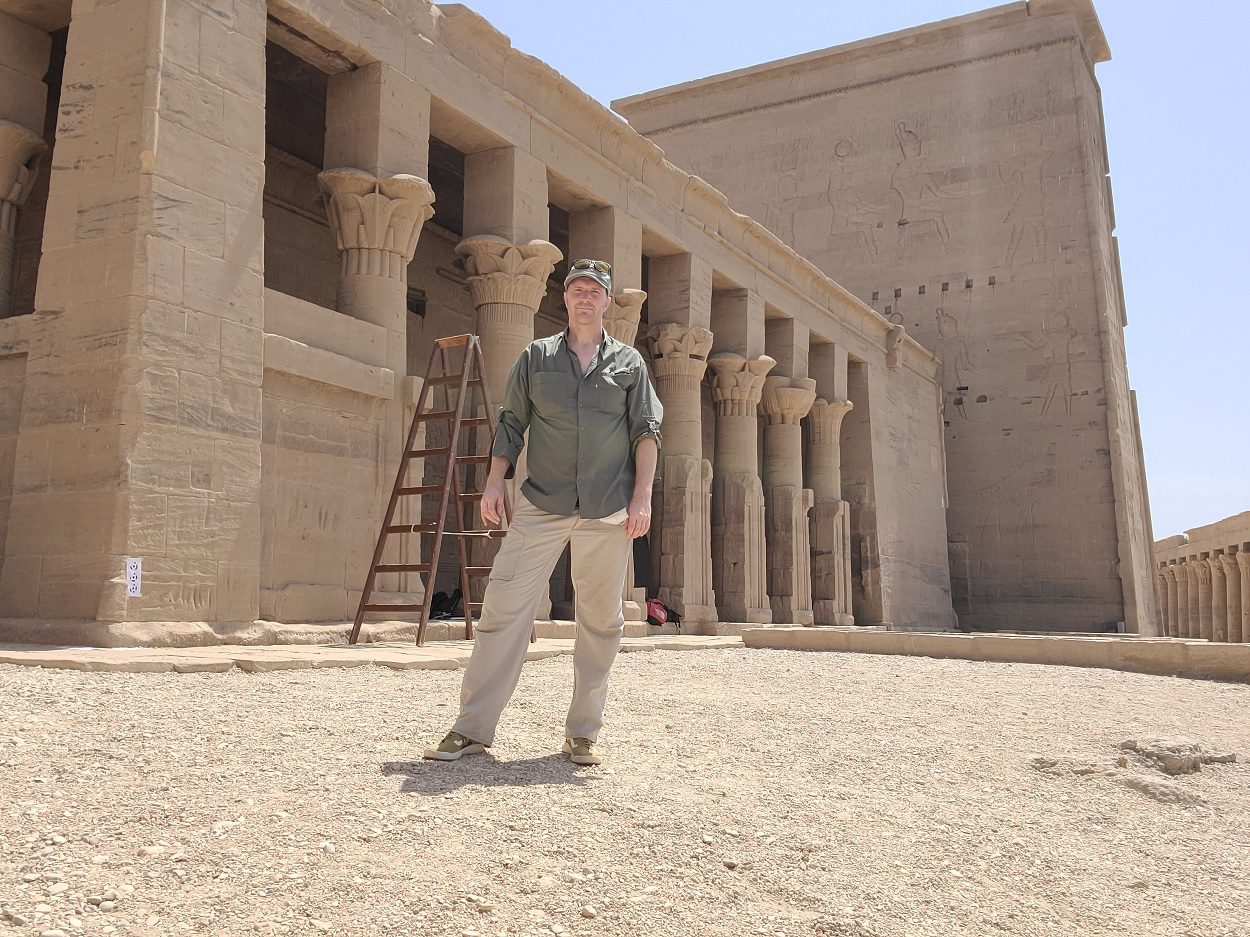The production of a state-of-the-art 3D recording of the Temple of Isis in Philae, Egypt is allowing researchers from Simon Fraser University to gain further understanding of ancient graffiti and how it relates to modern graffiti.
The researchers are collaborating with the University of Ottawa and have already shared preliminary results in Egyptian Archaeology. They have now gone back to Philae to continue their work on the project.
“It’s fascinating because there are similarities with today’s graffiti,” says SFU geography professor Nick Hedley, co-investigator of the Social Sciences and Humanities Research Council (SSHRC)-funded project. “The iconic architecture of ancient Egypt was built by those in positions of power and wealth, but the graffiti records the voices and activities of everybody else. The building acts like a giant sponge or notepad for generations of people from different cultures for over 2,000 years.”
Leading the team’s visualization efforts, Hedley utilizes his expertise in spatial reality capture to document ancient graffiti and their architectural surroundings using cutting-edge techniques such as photogrammetry, laser scanning, and raking light. By recording the reality of the site in three dimensions, he aims to create an accurate representation of the temple and the graffiti it houses.
With a significant number of graffiti, some of which are barely visible and carved less than a millimetre deep into the temple’s columns, walls, and roof, achieving precision is crucial to the project’s success.
Traditionally, the graffiti would have been documented through hand-drawn sketches or photographs. However, the team’s use of advanced methods allows for a higher level of accuracy and enables researchers to study and analyse the site remotely.
According to Sabrina Higgins, a co-investigator on the project and archaeologist at SFU, photographs and two-dimensional plans fall short in capturing the dynamic, multi-layered, and evolving nature of the field site.
Hedley is taking a step beyond basic two-dimensional imaging by creating an advanced three-dimensional recording of the entire surface of the temple. This innovative technique allows for the temple’s interior and exterior, along with the graffiti, to be viewed and analysed from virtually any angle, without sacrificing detail.
The three-dimensional visualization also provides an opportunity for researchers to investigate the relationship between figural graffiti, surrounding graffiti, and their placement in relation to the temple’s architectural structure.
Although this technology is transformative in examining the temple and its inscriptions, Hedley believes that the potential for applying spatial reality capture extends beyond archaeology and could have a significant impact on various fields.
“Though my primary role in this project is to help build the definitive set of digital wall plans for the Mammisi at Philae, I’m also demonstrating how emerging spatial reality capture methods can fundamentally change how we gather and produce data and transform our ability to interpret and analyse these spaces.” says Hedley.
Professor Nick Hedley – Image Credit : Simon Fraser University





